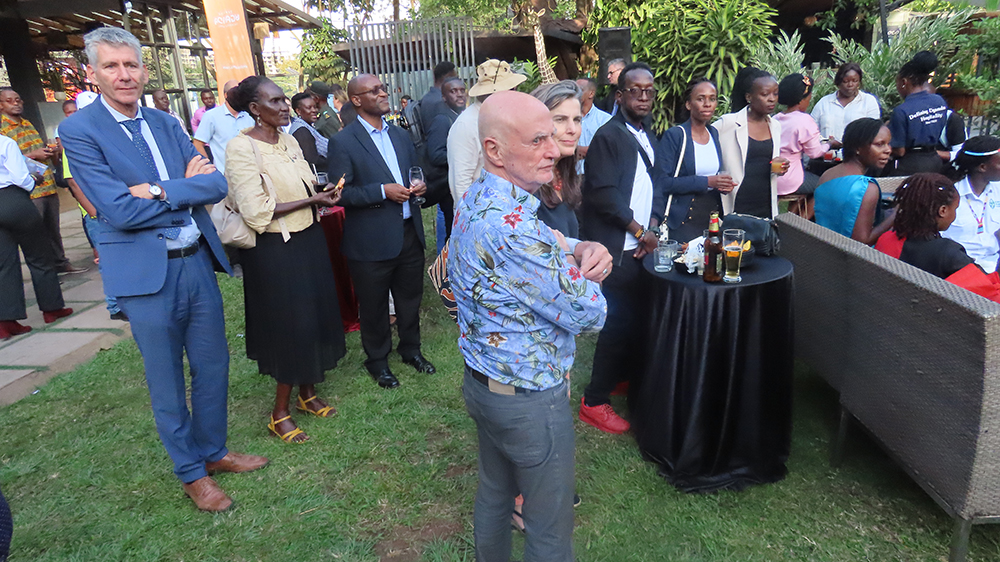Destination Uganda: Tour operators set sights on Europe, plot better itineraries
“There’s so much more to Uganda than gorillas and game drives. There are vibrant communities in Gulu and Karamoja whose stories, food, and traditions can enrich any itinerary. The challenge is for tour operators to have this information at their fingertips - accurate, fresh, and exciting,” said Bertrand Carrier, one of the lead facilitators at the training.
UTB chief executive officer Juliana Kagwa commended CMI for equipping Uganda’s tourism professionals with practical skills to grow their businesses and market the country more effectively.
Uganda’s tour operators are setting their sights on Europe - not just to explore new markets but to reimagine how Destination Uganda is sold to the world.
After an intensive three-day workshop at Fairway Hotel, Kampala, organised by the Uganda Tourism Board (UTB) in partnership with Communication Marketing International, the country’s travel professionals emerged with a renewed mandate: To tell better stories, craft more enticing itineraries, and go beyond the obvious attractions.
For decades, Uganda’s tourism pitch has revolved around the familiar - the majestic Mountain Gorillas of Bwindi, the thundering Murchison Falls, and boat rides on the Nile in Queen Elizabeth or Murchison Falls National Parks. While these remain magnetic draws, experts say it’s time to showcase the many other layers that make Uganda the Pearl of Africa.
“There’s so much more to Uganda than gorillas and game drives. There are vibrant communities in Gulu and Karamoja whose stories, food, and traditions can enrich any itinerary. The challenge is for tour operators to have this information at their fingertips - accurate, fresh, and exciting,” said Bertrand Carrier, one of the lead facilitators at the training.
Carrier emphasised storytelling as the missing link in Uganda’s tourism marketing.
“A tour is not just a list of destinations. It’s an emotional journey. You need to make the visitor feel Uganda before they even arrive.”
International Tourism Consultant Marlon Van Hee urged participants to adopt a customer-centered approach—understanding their target markets deeply before pitching an itinerary.
“Know your clients and start selling experiences, not just destinations. Find out their age, purchasing power, and interests. The youth want adrenaline - think white-water rafting on the Nile, zip-lining across Lake Bunyonyi, or dancing all night at Nyege Nyege Festival. Older travellers may prefer cultural immersion, storytelling evenings, or community visits.”
He added that every itinerary should tell a story - linking Uganda’s rich biodiversity to its people, history, and heritage.
“Sell a feeling, not a flight plan,” Marlon stressed.
Tim Camper, another facilitator, spotlighted Uganda’s northern and northeastern regions as underexploited tourism frontiers.
“Gulu and Karamoja have identities that fascinate travellers seeking authentic African experiences. The Karimojong way of life - their music, dance, and cattle culture - is a powerful attraction. When paired with Kidepo Valley National Park, you have an unbeatable cultural and wildlife package,” stressed Marlon.
He further noted that small investments in hygiene and packaging for local products like honey, milk, and beef could open new opportunities for cultural and culinary tourism.
“Even their oral histories - from colonial times through Idi Amin to today - can be woven into captivating narratives for visitors,” he added.
For Charlotte Beauvoisin, renowned blogger and tourism marketer, Uganda’s tour operators must embrace digital storytelling to remain competitive.
Uganda’s tourism narrative is shifting - from passive sightseeing to immersive experiences.
“Online visibility is no longer optional. Your website and social media pages are your shop windows. They must be visually appealing, regularly updated, and optimised for search engines,” tipped Beauvoism.
She encouraged operators to share real traveller stories, post high-quality photos and videos, and engage with online travel communities.
“If a potential client can’t find you online, to them, you don’t exist,” she quipped.
The training, part of UTB’s broader capacity-building program, was designed to enhance Uganda’s competitiveness in the global tourism marketplace. Participants learned how to package tourism products more creatively, handle diverse clients, and pitch to international travel agencies.
UTB chief executive officer Juliana Kagwa commended CMI for equipping Uganda’s tourism professionals with practical skills to grow their businesses and market the country more effectively.
“Our goal is to triple Uganda’s tourism arrivals in the near future. We are moving from promoting destinations to promoting experiences. Every region - from West Nile to Karamoja - has a story worth telling, and these stories will drive future bookings,” Kagwa said.
Speaking for CMI, Jeanette Scherpenzeel revealed that seventeen of the participants are destined to different countries in the EU to meet their counterparts for a business-to-business meet.
Uganda’s tourism narrative is shifting - from passive sightseeing to immersive experiences. Tour operators are being urged to connect wildlife adventures with cultural encounters, adventure sports, gastronomy, and heritage tourism.
Imagine a ten-day itinerary where a traveller tracks gorillas in Bwindi, samples traditional cuisine in Gulu, joins a Karimojong dance under the stars, and ends with a boat ride at Murchison Falls. Each stop offers not just sights but stories.
In the words of Bertrand Carrier: “When tourists go home and say, ‘I didn’t just see Uganda – I felt it,’ that’s when we’ve succeeded.”
With renewed storytelling skills, digital marketing strategies, and a deeper appreciation for Uganda’s hidden treasures, tour agents are poised to give the “Pearl of Africa” the glow it deserves on the global tourism stage.